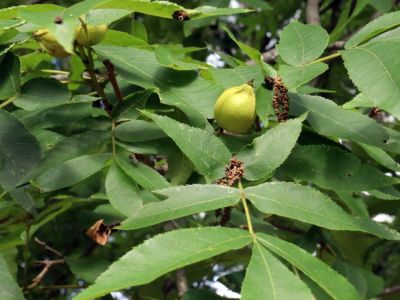About Butternut Harvesting
Butternuts, or white walnuts, are tolerant of a variety of poor soils but do require well-draining soil. The nuts resemble walnuts and are encased in a sticky husk inside a knobbed shell. Butternuts are richer, creamier, and sweeter than walnuts but are rarely cultivated. They are also susceptible to fungal infections. The incidence for fungal infection combined with the fact that the tree is difficult to propagate are the greatest impediments to commercial cultivation. Combine these with the great difficulty in cracking the nut, and harvesting butternuts commercially loses economic viability. Like walnuts, butternuts have significant omega-3 fatty acids, shown to reduce inflammation and reduce the risk for heart disease. Possibly due to their high fat content, butternuts rot rapidly when allowed to fall and sit on the ground. This means that when butternut harvesting, only harvest those nuts shaken from the tree.
When to Harvest Butternuts
Butternuts become ripe in the fall. You can tell when they are ready to harvest when you can dent the outer hull with your thumbnail.
How to Harvest Butternut Trees
There is no great secret to picking butternuts, just some physical labor. In the fall, knock the nuts from the tree (watch your head!) when the hulls begin to split. Remove the hulls as soon as you can. There are a several methods to removing the husk and all of them are challenging. You can try to pry them apart with a knife, stomp on them, roll over them with a car, or crack them between two boards. Wash the nuts to remove any clinging fibers in a bucket of water. Discard any nuts that float to the surface. These nuts are “duds” and will contain no meat. Spread the nuts in a thin layer on wire mesh trays or newspaper in a warm, ventilated area out of direct sun. This curing will take several weeks. When the nuts are done curing, you can hear them rattle in the shell. Store the cured nuts in a cool, dry, aerated area for several months or freeze shelled nuts for up to a year.
